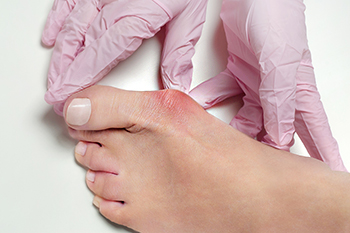
Surgery is often the only effective treatment for severe cases of bunions, where conservative measures like wearing well-fitting shoes and splints prove insufficient. Bunions can cause significant pain and foot deformity, making walking difficult. The primary goals of bunion surgery are to alleviate pain, enhance foot stability, and restore normal walking function. The surgical process involves repositioning the bones, tendons, and ligaments of the big toe, and stabilizing the foot using metal plates, screws, or wires. Post-surgery, the foot must remain stable with bandages or splints, and a special shoe is often worn to relieve pressure. Initial recovery requires limited walking and elevation to reduce swelling, with gradual weight-bearing as healing progresses. Complete recovery from bunion surgery generally takes four to six weeks, although swelling may continue for up to a year. The decision to undergo surgery depends on the severity of symptoms, degree of bone misalignment, the presence of related conditions like osteoarthritis, and overall health. If you are experiencing pain from a bunion, it is suggested that you schedule an appointment with a podiatrist to see if surgery is right for you.
If you are suffering from bunions, contact Franklin Harry, DPM of Best Foot Forward. Our doctor can provide the care you need to keep you pain-free and on your feet.
What Is a Bunion?
A bunion is formed of swollen tissue or an enlargement of boney growth, usually located at the base joint of the toe that connects to the foot. The swelling occurs due to the bones in the big toe shifting inward, which impacts the other toes of the foot. This causes the area around the base of the big toe to become inflamed and painful.
Why Do Bunions Form?
Genetics – Susceptibility to bunions are often hereditary
Stress on the feet – Poorly fitted and uncomfortable footwear that places stress on feet, such as heels, can worsen existing bunions
How Are Bunions Diagnosed?
Doctors often perform two tests – blood tests and x-rays – when trying to diagnose bunions, especially in the early stages of development. Blood tests help determine if the foot pain is being caused by something else, such as arthritis, while x-rays provide a clear picture of your bone structure to your doctor.
How Are Bunions Treated?
- Refrain from wearing heels or similar shoes that cause discomfort
- Select wider shoes that can provide more comfort and reduce pain
- Anti-inflammatory and pain management drugs
- Orthotics or foot inserts
- Surgery
If you have any questions, please feel free to contact our offices located in Festus and St. Louis, MO . We offer the newest diagnostic and treatment technologies for all your foot care needs.
